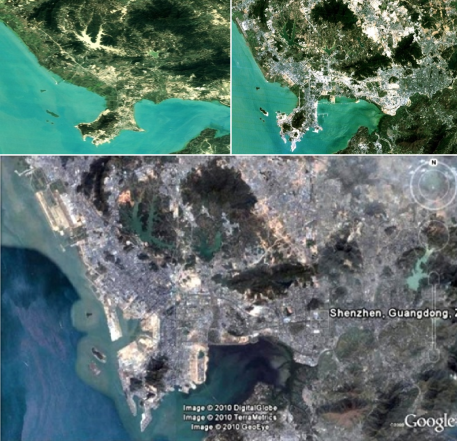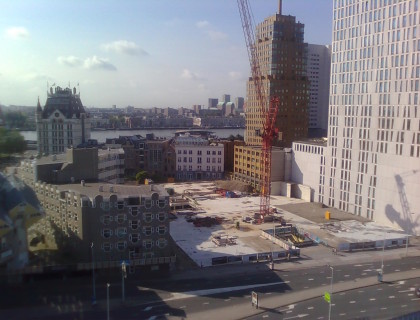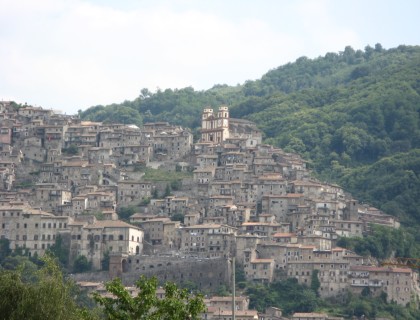by Stefano Serafini
“What if, instead of breaking them, the design of cities could naturally feed social ties? There must be a way for urban planners to make cities more human-centred and livable, by focusing on how the built environment affects sociality.”
ABSTRACT
The International Society of Biourbanism (ISB) is organizing a Summer school in neuroergonomics and sociogenesis, to be held in Artena, Italy, on July 13th-20th 2014. The program offers seven full days of lectures, practical workshops, and design studios, with international experts for exploring how to design urban environments able to revive, support, nourish, and enhance sociality and human relationships. Seven additional days will be devoted to study the ancient urban codes of two biophilic Italian towns, Artena and Segni – a research headed by the distinguished Professor Besim Hakim. The results of this study will be brought to the international Workshop on socio-spatial transformation under the state of emergency in Greece, on August 1-9.
Any full social interaction includes a fundamental part of the human person: the body. Therefore, it always occurs in a place. Space becomes place when intentionality is at stake, and landscape, nature, buildings, and forms in space have a meaningful interaction with life. An urban place – the social environment par excellence – has therefore always a biopolitical meaning. Designing the urban environment means designing the biopolitical preconditions of human life, including the chances for freedom, social interaction, political practice, health, and well-being.
The placelessness of modern and contemporary cities is not an aesthetic issue – it’s social, and it severely affects citizens’ self-determination and quality of life, including the ability to connect to each other and to a nourishing environment. Thus, the ISB school aims at a needful social and cultural change of cities by design.
Biourbanism is rethinking urban design by joining contributions from the domains of epistemology, neurophysiology, environmental psychology, economics, biopolitics, urban studies, service design, and sociology. The results outline the possibility of a paradigm shift in urban practice. This carries a peer-to-peer approach which involves designers, inhabitants, and places.
A biopolitical issue
The third ISB summer school will complete a cycle. Having dealt with neuroergonomics as a prerequisite to urban planning (Neuroergonomics and Urban Design, 2012), followed by its small-scale applications for propagating systemic effects over the entire urban organism through biourban acupuncture (Neuroergonomics and urban placemaking, 2013), participants in the 2014 International Summer School in Biourbanism will focus on how to design spaces that facilitate and reinforce social relations, with a special program in neuroergonomics and sociogenesis.
This issue is of paramount importance because although modern cities gather millions of people in, they tend to overlook and break down human relations, as Marx and Engels already noticed almost a century and a half ago.[1] This decade, cities have become the living environment for half of the planet’s population for the first time in history, and according to urban migration and growth trends, 64% and 86% of the developing and developed world respectively will be urbanized by 2050 (67% overall, i.e. 2.7 billion more people than today),[2] while urban exploitation of land will double in less than 20 years.[3]
What kind of design is behind such an environmentally unsustainable, speedy, and dehumanizing urbanization phenomenon?

Fig. 1 Three phases of urban land use in Shenzen, China: 1988, 1996, 2010 (source: Google)
If you look carefully, modern cities have been meant as machines – economic growth catalysers. Several scholars accuse Le Corbusier of being the evil genius of such an urban conception;[4] yet one should date its origins back to the very dawn of the Industrial age, with roots even into the phenomenon of the first ghetto (Venice, 1516).[5] In fact, modern cities are designed to functionalize the horizon of human life according to production. And that’s precisely why they break social connections. In a way, the early subsidiary and social role of cities has been morphed into the capitalistic subsumption[6] device par excellence. This happened by firstly transforming the physical space of cities through ghettoization, zoning or gigantism. Design has never been innocent.[7]
The industrial revolution has accelerated the transformation of streets, squares, and common environments into paths for goods, and turned dwellings into individualistic boxes, piled into suburbia. This has allowed less and less room for delightfulness and social connections, hence most of the “ugliness” of modern towns addressed by several urban critics like Tönnies, Simmel, Weber, Wirth, Marcuse, Bauman, Augé, Alexander and Salingaros.
Post-industrialism led to a leap in the quality of city morphing: as finance has long dematerialized capitalism, the postmodern city is heading towards a dematerialization of places.
As we know, space has become almost irrelevant for producing surplus value thanks to the deployment of information technology and its global dominance. Smart cities of today – the citadels of global capitalism – don’t need to destroy places anymore, because finance acts in the hyperspace of infosphere, and hyperspace is potentially and instantly everywhere. [8]
On one hand, this has worsened the hostility of urban environments toward humans. The history of progressive interfacing and loss of human connection to reality (i.e. nature, other human beings, and themselves) has been outlined by Ivan Illich.[9] Telephone devices, Internet, and social media seem to widen the range of sociability, while on the contrary they’re actively regimenting it. The medium is the message as notoriously McLuhan put it; and the message shapes and steers the messenger towards the purpose for which the medium was built. So to speak, what we write down on Twitter is Twitter itself. A self-referential production and consumption of a stream of information may be amusing, but it in fact happens in physical solitude and distracts awareness and life from real human actions and interactions, setting aside the needful and nourishing intentionality of body.
All that is fleshy, wild, dirty and unexpected has no room in the clean design of the contemporary ICT city, not surprisingly. What we really see going through a coded and engineered human settlement is, instead, a forest of abstract signs referring to its hyperreal backbone – a kind of pure essence of capitalistic ties who conquered, and substituted both social connections and space from within. The hypercity lives within the remaining shuck of modern towns, like a hermit crab.[10]
This is the ultimate result of a gradual transformation of human places into plugs for subsuming the wholeness of human life (and of nature, through human consumerism), according to the evolution of our society. Paraphrasing Bertrand Russell, one could say that place serves not only to give room to political freedom but to make possible political freedom which could not exist without it.[11] The transformation of contemporary urban environments into “non-places” is thus a means to monopolize all aspects of human life within a physical and cultural horizon that deflects social intentionality into passive cattle-like individualism. “Non-freedom” is not a blatant dictatorship, as placelessness is not a horrific instantiation of chaos. It rather occupies subtly the imaginary for eliciting and controlling desires, it builds paths which take only to planned destinations. As an expression of the society of spectacle, contemporary urbanism needs a certain aesthetics and, so to speak, an etiquette. The most evolved cities exhibit it abundantly in their neat, efficiently fancy urban organization and architecture.

Fig. 2 Rotterdam, The Netherlands (source: S. Serafini)
Given that real human connection doesn’t consist of chatting about ready-made news nor of having drinks together, everyone notices how it is objectively difficult to cultivate authentic sociability in the rushing routine that our lives turned out to be. A real interest towards the other, solidarity, even conflict, and in the end truth, are being banished by our urban society, as they have become irrelevant for our Hobbesian vision of the world.
Nevertheless, on the other hand, dematerialization is setting free many urban places, especially where the system controls fail, i.e. where raw physics and biology matter. Human reactions flourish like weeds between the cracks, in the scarce interstices where there’s little or no room for performance, goals, possession – and thus subsumption plugs can’t work.[12] Locality is furthermore living a new dawn, and it’s showing its ability to counter-exploit the global interface tools for reviving its local social connections.[13]
Solutions for a shift in urban planning
That the results of urban planning are not brilliant in this regard is perhaps the main topic for urban researchers and practitioners debate. May we refer after Biourbanism to the Ruin Academy by Marco Casagrande, the Project for Public Space in the United States, the Centre for Advanced Spatial Analysis in London, Jan Gehl Architects in Copenhagen, the Association for the Biourban Study of Monotowns at the Kazakh Economic University, etc.
Every architect and urban designer who hasn’t surrendered to the sterile logic of rules, looks forward to a built environment that positively affects society. Who doesn’t desire a city more human, authentic and happy, where social relations unfold and grow free? This is the problem we will address during the summer school.
To do that, we have first to deconstruct the mainstream mindset about the society, but we don’t aim at doing it ideologically. Evidence is enough: things have gone so wild that we need something more empirical and direct for dealing with the classical cage of modern urban thinking, after ideology has already showed its powerlessness.
Thus here you are with biophilia, constructal law, evidence-based design, laws of form, complexity, neurology and biology – the subjects that biourbanism connects together for offering a new vision over urban studies. The human attitude towards the alive world, and the reasons behind such an attraction, that we call neuroergonomics, has a lot to say about design and human wellness, despite architecture biennales, up-to-date journals, and politicians.
Stemming from evidence-based design, neuroergonomics is a discipline that merges neuroscience and ergonomics in order to match design with human biological and psycho-neuro-immunological wellness. It scientifically upholds the call for a human-centred design by overhauling the user experience design, because it measures the real psycho-physical effects regardless of fashion, ideology, culture, or current use.
Thinking out of the box allows us, for example to look at how ancient settlements like Artena happened to be so harmonious and well-working according to context, human feeling, the material and social needs of the time. That has nothing to do with stylistic nostalgia and aesthetics. The diatribe between “modernism” and “vernacularism”, for example, has no relevance here.

Fig. 3 Artena, Italy (source: Wikipedia)
This is why the zooming-out contribution by the keynote speaker, Professor Besim Hakim, is very relevant to our summer school. Professor Besim Hakim, Fellow of the American Institute of Certified Planners, a Harvard graduate in Urban Design, is a distinguished expert in Mediterranean urban codes. He devoted more than 40 years of research studying why Mediterranean cities from the 6th to the 19th centuries AD are so beautiful and well fitting. His work showed the existence of bottom-up urban codes, based on social connections and commons, rather than on a formal top-down blueprint envisioned by an architect. Ancient Mediterranean towns unfolded outwards according to proscriptive, local, shared rules that were understandable and enforceable by everyone, and that formed a fundamental tool for people to peer-to-peer build the place they were inhabiting.[14]
The social core of this ancient bottom-up approach to the urban environment is very logical, and has shown to have some interesting properties from the biourbanism point of view: the urban forms generated through such a process share fractal and biophilic qualities with the natural environment. They match not only with sociality, but also with neurophysiological homeostasis, a phenomenon that deserves a scientific explanation.
A humble sensorial experience for action
The term “sociogenesis” is a word derived from Greek which means “the generation of the society”, not “the building of the society”. Socio-generative design aims at raising, developing, and facilitating social relations between people according to their own specific dynamics that already exist, and connect better the individual with the world. It works through architectural, urban, organizational, economic, and educational interventions that focus on relations, by re-sewing a broken but still existing net.
Thesocio-generative design is thus particularly complex and sensitive. It requires multi-disciplinary contributions on the one hand, and the active participation of the community on the other. As such, the process is itself socio-generative, and an integral part of the subject. The project will have a dynamic character, because sociogenesis never reaches an end. Like a living body, it is constantly adapting to changes. The product of socio-generative design is therefore a system, not merely a structure. It includes a procedural homeostatic flow, an adaptive attitude, and a constant transformation/processing (both physical and cognitive) of the place and of its affordances, along with a dynamic writing of urban codes.
The ISB summer school will take place in the ancient borgo of Artena. Participants will share the place with the local community, will sleep in their houses, eat and work in the same vibrant and real set they are going to study, because knowledge is not about reading or talking, but primarily about experiencing, feeling, observing, and doing. One must be humble when seeking for the reality to open up.
After the ISB summer school, Professor Hakim will lead a research project on local codes (Artena, Segni) from July 21st to 27th We expect members of ISB and other scholars to join and participate to this unique opportunity.
The ISB Summer School in Artena will be followed also by a complementary workshop in Heraklion, Greece, co-organized with the Autonomous Research Lab of Crete. The subject for this workshop is socio-spatial transformations under the state of emergency. Scholars will gather in Crete to discuss the interrelations between design, economics and politics, and the results of the summer school will be provided as material ready to be processed into social action. The program consists of three labs (P2P/Open Source Logistics, Beyond Economics, and Biophilia/Design and Power), a sensory seminar, a site-specific design studio and field trips. Most relevant will be the space given to Peer-to-peer Urbanism as a participatory urban planning approach to design, construct, and repair cities in a way that anyone may choose: participate, share, and modify theories, methods, and implementation technologies at any time. Peer-to-peer Urbanism is “open source urbanism”, by the people, for the people.[15]
The goal is to delineate the systemic implications of local responses to recession and to explore socio-spatial practices that contradict and negate the current economic restructuring regime. A new urban design is needed for building authentic cities – polis – able to bring back politics, i.e. the bottom-up dialectic search for a new economic system, and the longing for a more authentic, human, social, and meaningful life.
NOTES
[1] Friedrich Engels, The condition of the working-class in England in 1844. Panther Edition: London 1969 http://www.marxists.org/archive/marx/works/1845/condition-working-class/index.htm
[2] United Nations, Department of Economic and Social Affairs, Population Division. World Urbanization Prospects, the 2011 Revision: Highlights. UN: New York 2012 http://esa.un.org/unup/Documentation/highlights.htm
[3] Shlomo Angel, with Jason Parent, Daniel L. Civco, and Alejandro M. Blei. Making Room for a Planet of Cities (Policy Focus Report). Lincoln Institute of Land Policy: Cambridge, Mass 2011 https://www.lincolninst.edu/pubs/dl/1880_1195_Angel%20PFR%20final.pdf
[4] Simon Richards, The Antisocial Urbanism of Le Corbusier. Common Knowledge XIII (2007) 1, pp. 50-66.
[5] Stefano Serafini, Sign, Cognition, Body. Lecture at the Summer school in neuroergonomics and urban placemaking, Artena, Italy, July 23rd 2013.
[6] Karl Marx. Results of Immediate Process of Production. Appendix in: Capital. Volume 1: A Critique of Political Economy. Penguin Classics: London 1990 pp. 943–1084.
[7] Nikos Salingaros. Complexity and Urban Coherence. Journal of Urban Design, vol. 5 (2000), pp. 291-316 http://zeta.math.utsa.edu/~yxk833/UrbanCoherence.html
[8] Antonio Caperna & Stefano Serafini, Biourbanism as a new framework for smart cities studies, in Vinod Kumar (ed.) Geographic Information Systems for Smart Cities. Copal Publishing: Ghaziabad/London 2013.
[9] Ivan Illich, La perte des senses. Fayard: Paris 2004.
[10] Jean Baudrillard, L’échange symbolique et la mort. Gallimard: Paris 1976.
[11] “Language serves not only to express thought but to make possible thoughts which could not exist without it”, as quoted by Neil Postman, Teaching as a conserving activity. Delacorte Press: New York, 1979, chap. 8.
[12] Marco Casagrande, Biourban acupuncture. From Treasure Hill of Taipei to Artena. ISB: Rome 2013.
[13] Igor Calzada, Adolfo Chautón, Domenico Di Siena. Macro, Meso, Micro. Systemic Territory Framework from the perspective of Social Innovation. 2013 http://macromesomicro.com/book/
[14] See for example Besim Hakim, “Mediterranean urban and building codes: origins, content, impact, and lessons”, Urban Design International, XIII (2008) 1: 21-40.
[15] Nikos Salingaros with A. Caperna, M. Bauwens, D. Brain, A. M. Duany, M. W. Mehaffy, G. Mehta, F. Mena Quintero, E. P. Petit, A. Rizzo, S. Serafini, E. Strano. P2P Urbanism. 2010 http://zeta.math.utsa.edu/~yxk833/P2PURBANISM.pdf